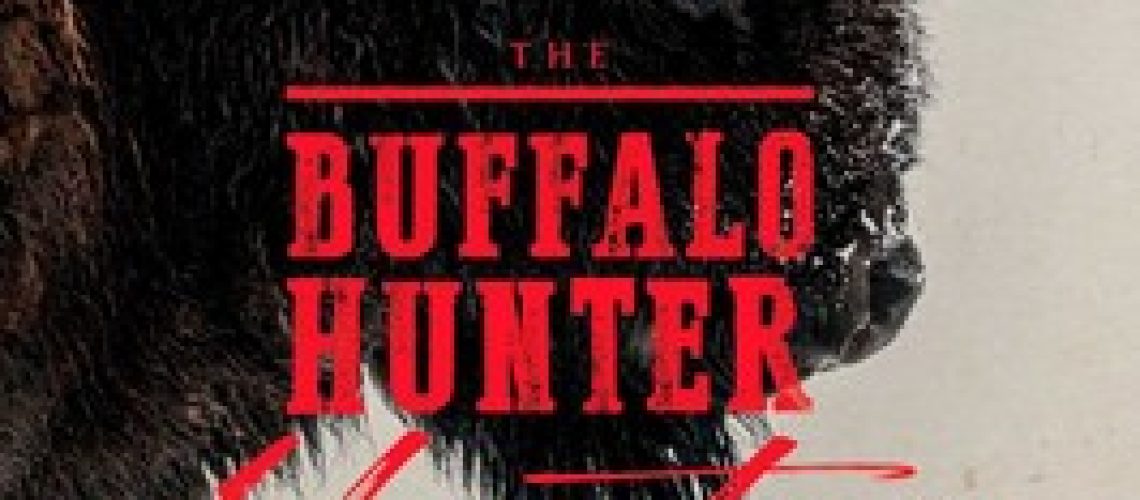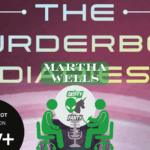Until now I had only read some short stories by Stephen Graham Jones. Given how prolific and acclaimed his writing is, and my genre tastes, this is pretty astounding to me. I’m now so glad to have moved one of this novels from my “to read” pile into the actualized, and he’s going into my priority to read again soon, regularly.
Perhaps you’re way ahead of me and have already read much of Jones’ work, or at least some. Or perhaps you’ve not dipped into his work yet either. Either way, I do hope that you can jump into the Buffalo Hunter Hunter without knowing much about it at all, as I got to.
The Buffalo Hunter Hunter captivates from its opening pages. In 2012, a professor going up for tenure, Etsy Beaucarne, learns that a journal by her great-great-great grandfather, a Lutheran minister who went missing in 1912, has been discovered in Montana. She sets out to transcribe Arthur Beaucarne’s journal to uncover a history that could serve as opportunity for both an academic publication and the solution to the mystery of what happened to her ancestor.
Jones writes the majority of the novel presented as Etsy’s transcription of the manuscript penned by her ancestor, which in turn is Arthur’s reflections on a period of confessional-style encounters he has with a strange Pikuni (Blackfeet) man, contrapuntally organized with transcripts of the Pikuni man’s unbelievable tale. Most frequently referred to as Good Stab, the Pikuni man has been given multiple names, of which none precisely fit the truth of his being. Good Stab calls Arthur “Three Persons,” explaining this in terms of the Trinitarian theology of Arthur’s faith. However, Good Stab’s tale, which begins in 1870, reveals deeper meaning behind this appellation, and soon reveals to Arthur and the reader that the confessional nature of their conversation is not one-sided.
Jones gives each of the three main characters of the novel an exceptionally personalized voice. A large part of what captivated me through the pages was his remarkable ability with the flow of words through a diversity of styles, a variation in ways that stories can be told. A modern woman struggling to forge a life of her own in the world of academia, a Lutheran pastor from 1912 who is a participant in the Westward colonization of Turtle Island, and the tortured soul of a Pikuni whose life arguably ended in the 1870s, now damned to separation while witnessing the attempted destruction of his people and culture. Three very different points of view, of approaching history, life, and the world. Yet Jones makes them all compelling, believable, and gut-wrenching. This is, after all, horror.
Violence and death pervade the historical heart of The Buffalo Hunter Hunter, both in Good Stab’s tale and mysterious deaths that appear in the community during the period of Arthur’s conversations with Good Stab. As the supernatural horror element to the novel became clear to me, I became even more fascinated with what Jones is doing in this novel: casting a classic piece of folklore in unique indigenous lights of nature and metaphor. (If I were more familiar with German terms I would’ve realized the supernatural element here from the very start; ironically, given my full German blood, I was more familiar with terms from Good Stab’s vernacular!)
The ‘rules’ Jones follows in terms of the supernatural element are quite interesting in terms of how they seem to symbolically match what I have learned of indigenous experiences and worldviews. I particularly enjoyed Good Stab’s choices for how to ‘fight’ the supernatural elements, building upon a natural view of the world, and balance, that a more combative, conqueror philosophy would not settle upon.
The supernatural horror of the novel serves the plot and to situate the book into the marketing genre of horror, but it’s also there as a manifestation of the condition of colonization subjected upon the native populations of any land. It’s that historical – and present-day – reality where the true horror of The Buffalo Hunter Hunter lies. The physical violence and brutality of it all. The psychological damage. The intellectual rationalizations that humans make to soothe ourselves. The unfair, impossible, choices that are made for survival. The betrayals and the many, many failures.
By novel’s end, The Buffalo Hunter Hunter returns to 2012 for the consequences of what Arthur has recorded for Etsy’s future life. After so many pages spent with Good Stab and Three Persons, the reader has been delivered a real historical horror novel: fiction based on specific historical events and general practices and records. As the cover blurbs of the book promise, we also see this as a novel of indigenous revenge. In part it is.
But now back with Etsy in the present (well, more recent past), we can see how The Buffalo Hunter Hunter is also about how suitable revenge could never be achieved, and it begins to address themes such as atonement and repentance for generational sin, for sins that are without personal choice behind them. And perhaps a theme of self-reconciliation. With so much horror and emotional pain in the novel, this bit of hope serves as a needed salve.







